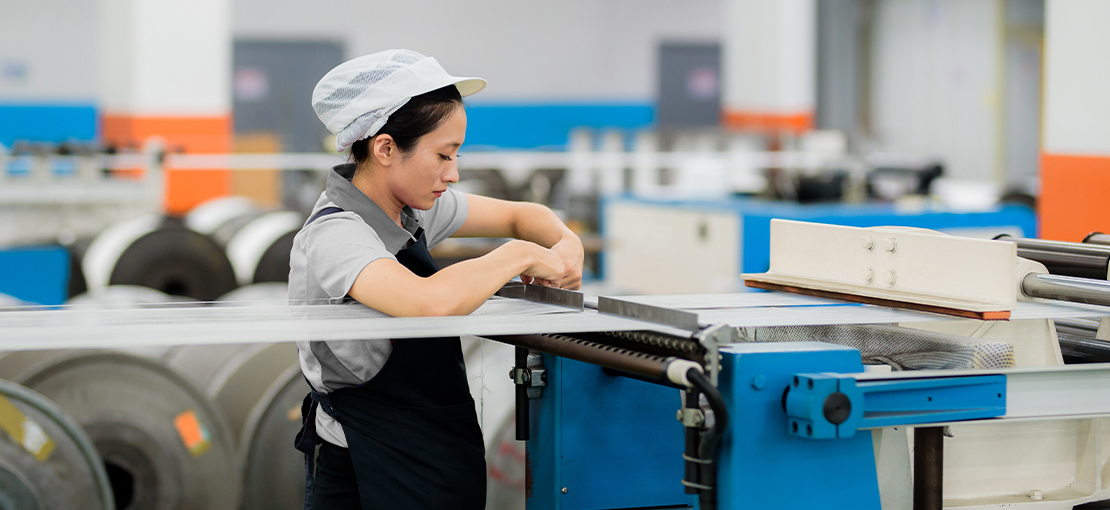
Energy management in the supply chain
Our goal: Energy efficiency and conversion to renewable energy sources
VAUDE has set itself ambitious, science-based goals in order to achieve climate-neutral manufacturing for all its products worldwide in the future. With Science Based Targets (SBT), VAUDE wants to make its contribution to limiting global warming to a maximum of 1.5 degrees in accordance with the goals of the Paris Climate Agreement. Read more about the VAUDE climate strategy here

»In order to achieve climate-neutral product manufacturing, we will first optimize our supply chain processes from material production to the finished product to ensure maximum conservation of resources as well as high material and energy efficiency and then compensate for unavoidable emissions.«
Measuring energy consumption, reducing emissions
One of the largest sources of greenhouse gas emissions at VAUDE comes from the energy consumption of our suppliers. Even though we have worked for years to raise awareness on this issue, many of our suppliers themselves are still working on making their energy consumption more transparent and many are still using climate-damaging fossil fuels. Not just at VAUDE, of course. The global textile industry continues to contribute significantly to the climate crisis. More information on this from the Federal Environment Agency here
We have a long road ahead of us with our suppliers in the coming years. For the first time, we have now included the energy consumption of our most important material suppliers in the VAUDE climate footprint. Therefore, we know that the reduction of energy consumption in material production must be an absolute focus of our supplier management, in addition to the great challenge of converting energy consumption at suppliers to renewable energy sources such as wind, sun or hydropower.
Concrete figures on emissions from energy consumption in the supply chain at VAUDE can be found here
Creating energy consumption transparency
The first challenge is to obtain reliable data on energy consumption. VAUDE is working with the Facilities Environmental Module (FEM) from the Higg Index, a software that is becoming increasingly popular in the textile industry and also with our suppliers. More about the Higg Index here
As a medium-sized company, VAUDE orders account for a small share of the annual production volume of many material manufacturers so our influence there is also small. This applies to the producers who assemble and sew VAUDE products, but even more so to the large companies that manufacture the source materials such as fabric panels, zippers or tent poles.
We can only try to be persuasive and help people to help themselves – ideally together with other companies that also use materials from the facilities. That's why one focus of our work at present is to find alliances and initiate joint projects on energy management in the supply chain.
First step: Pilot project Environmental Stewardship
In a pilot project, VAUDE has conducted environmental management training courses with a number of suppliers of textile materials. As a result, we’re seeing savings of over 18 million kilowatt hours of energy in production every year. Read more about the project and its success here.
VAUDE participated in a GIZ climate protection project in Vietnam in 2018. The project trained and advised suppliers on energy management and climate protection, how they could reduce energy consumption, climate-damaging emissions and costs – often using simple means. The findings from this have been incorporated into the training materials for our VAUDE Vendor Club.
Most of our fabric suppliers also use the bluesign® System, in which energy efficiency plays a significant role. For VAUDE, this is an important component of our environmental management system.
No legal requirements
Both the production of materials and components (such as fabrics or zips) and the production of chemical agents (such as dyes) or substances required for the functionality of the products (such as water repellency, UV protection, etc.) consume energy. Sewing the products is also energy-intensive.
There are still no legal regulations on the designation of energy consumption in the manufacturing of outdoor products, let alone legal requirements for their energy efficiency.
Company headquarters in Tettnang are climate neutral
| GRI: | 302-1 |
| GRI: | 302-2 |
| GRI: | 302-3 |
| GRI: | 302-4 |




